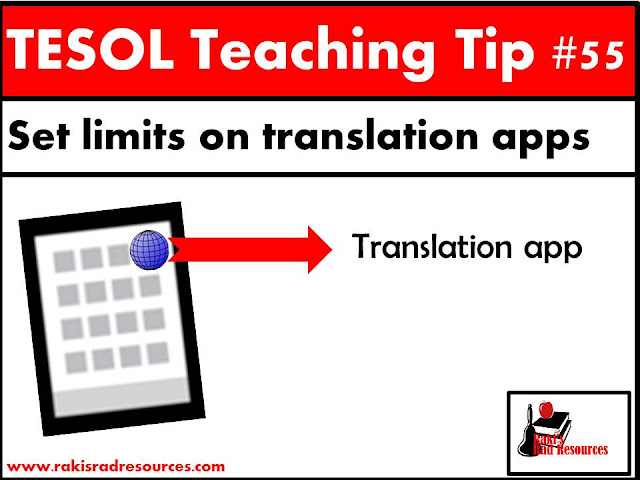As a teacher at an International School, many of my students were English Language Learners. Even my native English speakers were living in a non-English speaking country. In addition to having Vocabulary Packets designed specifically for ESL students, I also write weekly blog posts with tips on teaching English Language Learners.
Technology can be extremely helpful when you are learning or practicing another language. The translating apps alone are worth their weight in gold when you are stuck one word that you can’t believe you don’t know. I have always allowed students to use translating apps when they get stuck on a vocabulary word in reading or in a math problem. I also allow them to look up words they are stuck on when they are writing. However with students, I always feel that using Google Translate or translating apps like iTranslate is a balancing act. Too little use and students are left staring at a blank paper getting frustrated by the fact that they can’t formulate their thoughts. Too much use and students translate entire paragraphs and never build their ability to think in English. The solution, of course is moderation. We must teach our language learning students to use translating applications moderately and responsibly. Here are a list of rules that I use in regards to translating applications.

These rules must be discussed with students and enforced. Teachers should also discuss the weaknesses of translating apps with students. Many words have multiple meanings. My 2nd grader tried to translate the sentence “Inventors are cool.” into Arabic the other day and got a sentence that talked about freezing inventions. Translation devices aren’t always right. We need to teach students to think critically about their translations. When my 2nd grader got the mistranslation, he knew it wasn’t correct and we were able to brainstorm other words for “cool” that he could substitute and get a better result. This type of thinking skill helps students think critically about what they are doing, but it must be taught, modeled and explained to students.
Please feel free to weigh in in the comments. How often do you let your students use translating applications?

Technology can be extremely helpful when you are learning or practicing another language. The translating apps alone are worth their weight in gold when you are stuck one word that you can’t believe you don’t know. I have always allowed students to use translating apps when they get stuck on a vocabulary word in reading or in a math problem. I also allow them to look up words they are stuck on when they are writing. However with students, I always feel that using Google Translate or translating apps like iTranslate is a balancing act. Too little use and students are left staring at a blank paper getting frustrated by the fact that they can’t formulate their thoughts. Too much use and students translate entire paragraphs and never build their ability to think in English. The solution, of course is moderation. We must teach our language learning students to use translating applications moderately and responsibly. Here are a list of rules that I use in regards to translating applications.

These rules must be discussed with students and enforced. Teachers should also discuss the weaknesses of translating apps with students. Many words have multiple meanings. My 2nd grader tried to translate the sentence “Inventors are cool.” into Arabic the other day and got a sentence that talked about freezing inventions. Translation devices aren’t always right. We need to teach students to think critically about their translations. When my 2nd grader got the mistranslation, he knew it wasn’t correct and we were able to brainstorm other words for “cool” that he could substitute and get a better result. This type of thinking skill helps students think critically about what they are doing, but it must be taught, modeled and explained to students.
Please feel free to weigh in in the comments. How often do you let your students use translating applications?



No comments:
Post a Comment